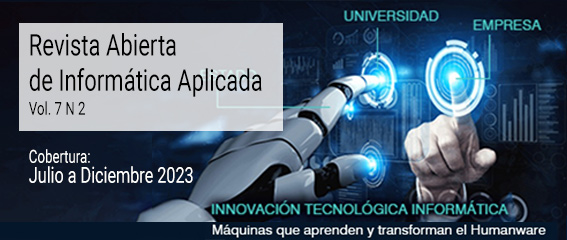Plataforma IOT para Monitoreo Remoto de pacientes con Insuficiencia Cardíaca y técnicas de IA para la detección temprana de Fibrilación Auricular
DOI:
https://doi.org/10.59471/raia202383Palabras clave:
MONITOREO REMOTO DE PACIENTES (RPM), ECG, APRENDIZAJE AUTOMÁTICO, IOT, FIBRILACIÓN AURICULAR (FA)Resumen
El Telemonitoreo permite obtener información de rutina sobre el estado del paciente con fines de seguimiento y cuidado remoto. Las plataformas de telemonitoreo implementan mecanismos a través de sistemas de software que leen las alteraciones de los signos vitales, y permiten detectar descompensaciones en etapas incipientes para facilitar su tratamiento. En el presente artículo describimos la primera plataforma de telemonitoreo que combina IoT e IA y que se está desarrollando en el país. Esta plataforma permite que pacientes con diferentes patologías crónicas -actualmente insuficiencia cardíaca- puedan recibir la atención adecuada desde casa. El proyecto comprende dos objetivos técnicos concretos: a) desarrollar una aplicación móvil que controle los dispositivos de medición, incluido un ECG monocanal, b) producir algoritmos de procesamiento de señales biomédicas y, en particular, de detección de fibrilación auricular que se incluyan en la plataforma. En este artículo se informan los resultados preliminares del proyecto, centrándose en describir el diseño y evaluación de algoritmos de detección de Fibrilación Auricular, que han logrado resultados alentadores en términos de Exactitud, Precisión, Especificidad y Sensibilidad
Descargas
Publicado
Número
Sección
Licencia
Derechos de autor 2023 Sergio Javier Liberczuk (Autor/a)

Esta obra está bajo una licencia internacional Creative Commons Atribución-NoComercial 4.0.




